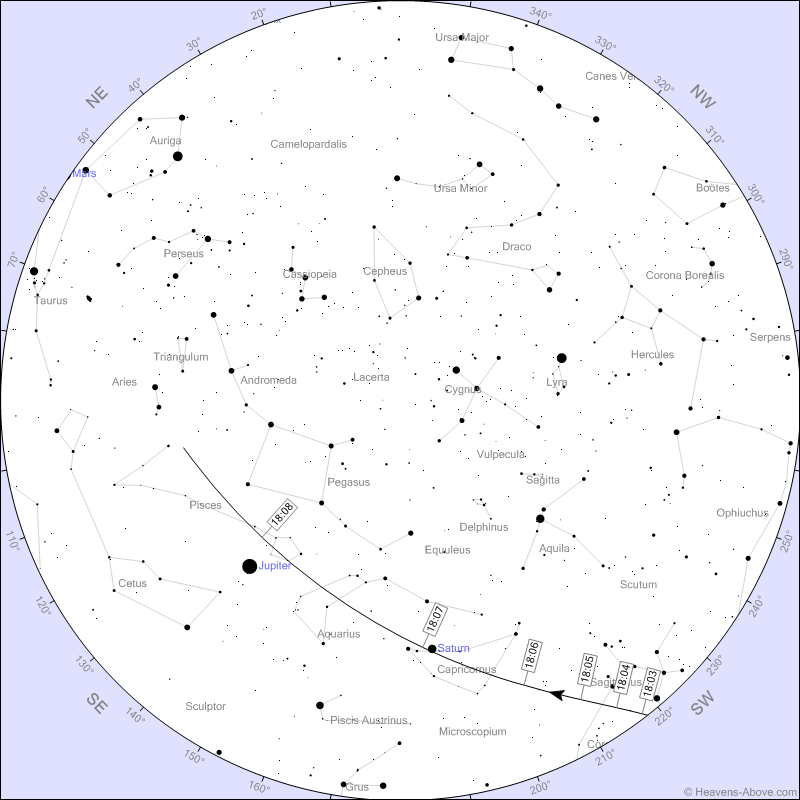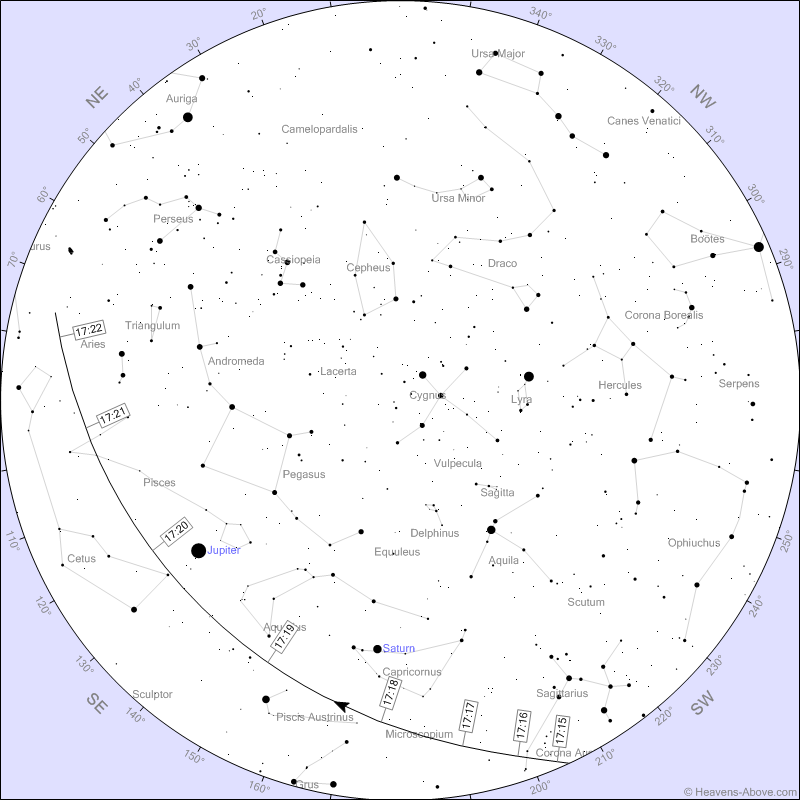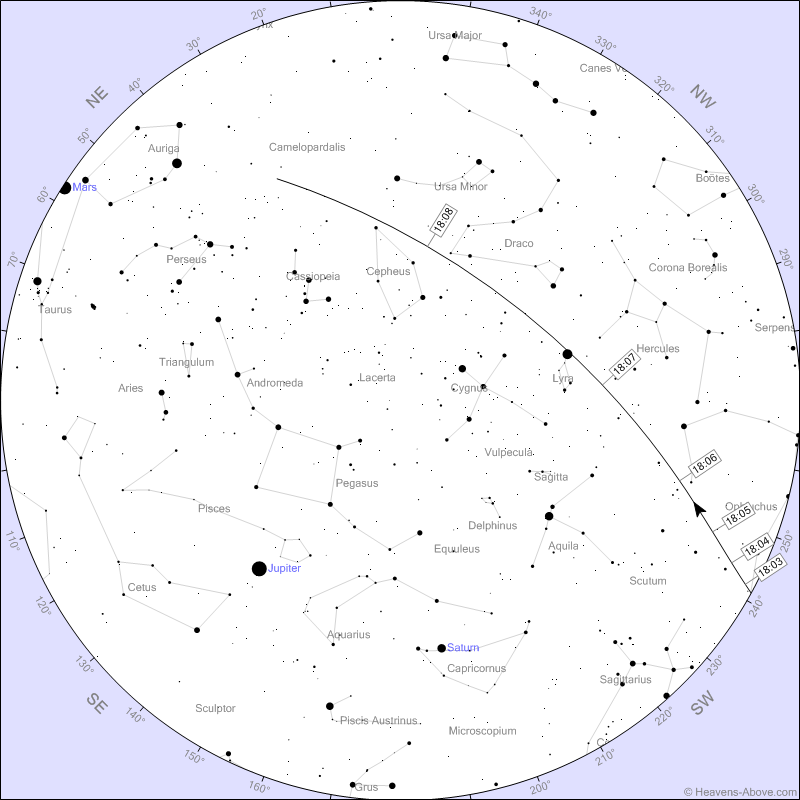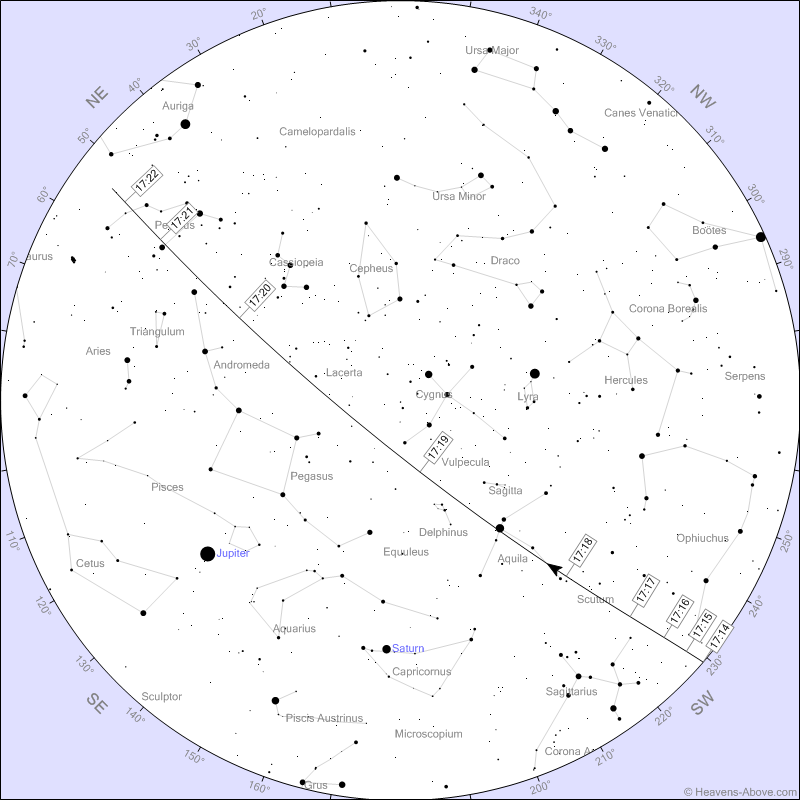Image credit: NASA/Roscosmos
The International Space Station (ISS) is returning to the evening skies with several bright passes over the Delaware Valley this weekend. Below we highlight the three best opportunities to #SpotTheStation this week.
The space station orbits Earth at an average altitude of 248 miles and circles the globe every 90 minutes. In one day, it orbits the Earth 16 times, traveling through 16 sunrises and sunsets!
November 17 - 6:02 pm
One of the best passes is tonight, November 17, when the ISS passes near Jupiter and Saturn. The ISS will rise in the Southwest at 6:02 pm, passing along the ecliptic before disappearing at 6:08 pm. The ISS will first appear near the constellation Sagittarius, the centaur, passing through Capricornus, Aquarius and Pisces and right in between tonight's brightest planets, Saturn and Jupiter.
At its brightest, the station will appear brighter than Jupiter, at magnitude -3.4. Brightness is measured on a reverse logarithmic scale. The brighter the object is, the lower its magnitude number. For example, the Sun is magnitude -27, the full moon is -13, and Mercury's average brightness is 0.23. The average naked eye limit is magnitude 6.5.
While you're out looking, be sure to look for Mars as it begins to rise in the Northeast. Mars has been getting steadily brighter each night as it approaches opposition.

Details:
| Event | Time | Brightness |
| Rises | 18:02:39 | 0.9 |
| Maximum Altitude | 18:07:58 | -3.4 |
| Enters Shadow | 18:08:34 | -3.4 |
November 18 - 5:14 pm
The next pass will begin at 5:14 pm on Friday, November 18. The ISS will rise in the South-Southwest passing low in the southern sky beneath Jupiter and Saturn.
At its brightest, the station will be about as bright as Jupiter at magnitude -2.4.

Details:
| Event | Time | Brightness |
| Rises | 17:14:32 | 0.8 |
| Maximum Altitude | 17:19:37 | -2.4 |
| Enters Shadow | 17:22:21 | -1.7 |
November 19 - 6:02 pm
Another very bright pass of the ISS occurs just after 6 pm on Saturday, November 19. The space station will rise in the West-Southwest passing high overhead towards the Northeast before entering Earth's shadow near the constellation, Cassiopeia, the queen. It will reach maximum brightness near the star Vega in Lyra, the harp.
At its brightest, the station will be brighter than Jupiter at a magnitude of -3.4.

Details:
| Event | Time | Brightness |
| Rises | 18:02:21 | 1.5 |
| Maximum Altitude | 18:07:44 | -3.4 |
| Enters Shadow | 18:08:57 | -3.0 |
November 20 - 5:14 pm
The last and brightest of the passes will begin at 5:14 pm on Sunday, November 20. The ISS will rise in the Southwest near Sagittarius, the centaur. It will pass directly overhead, in front of the bright star Altair, in Aquila, the eagle, crossing to the Northeast before entering Earth's shadow at 5:22 pm.
At its brightest, the station will be much brighter than Jupiter at magnitude -3.8.

Details:
| Event | Time | Brightness |
| Rises | 17:13:51 | 1.6 |
| Maximum Altitude | 17:19:14 | -3.8 |
| Enters Shadow | 17:22:32 | -1.6 |